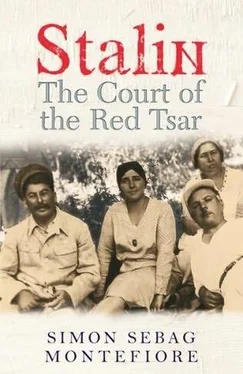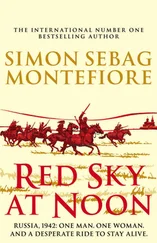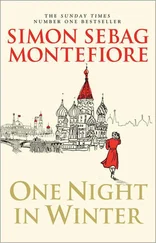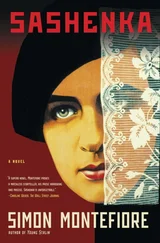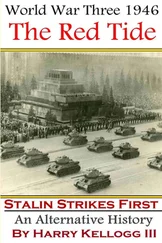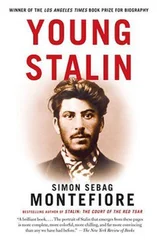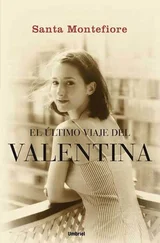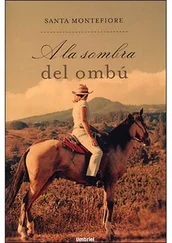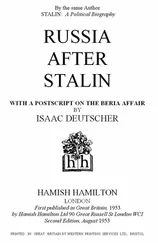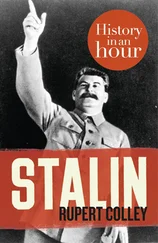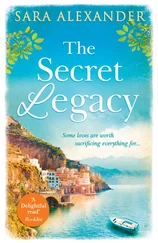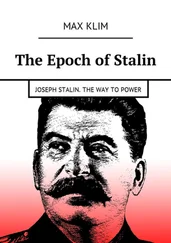One can only imagine the frantic uproar in the apartment as the oblivious ruler of Russia slept off his drink down one corridor while his wife slept eternally down the other. They also called Nadya’s family—her brother Pavel, who lived across the river in the new House on the Embankment, and parents, Sergei and Olga Alliluyev. Someone called the family’s personal doctor who in turn summoned the well-known Professor Kushner.
Peering at her later, this disparate group of magnates, family and servants, searching for reasons for this act of despair and betrayal, found the angry letter she left behind. No one knows what it contained—or whether it was destroyed by Stalin or someone else. But Stalin’s bodyguard, Vlasik, later revealed that something else was found in her bedroom: a copy of the damaging anti-Stalinist “Platform,” written by Riutin, an Old Bolshevik who was now under arrest. This might be significant or it might mean nothing. All the leaders then read opposition and émigré journals so perhaps Nadya was reading Stalin’s copy. In her letters to Stalin, she reported what she had read in the White press “about YOU! Are you interested?” Nonetheless, during those days in the country at large, the mere possession of this document warranted arrest.
No one knew what to do. They gathered in the dining room, whispering: should they wake up Stalin? Who would tell the Vozhd ? How had she died? Suddenly Stalin himself walked into the room. Someone, most likely it was Yenukidze, Stalin’s old friend who, judging by the archives, had assumed responsibility, stepped forward and said: “Joseph, Nadezhda Sergeevna is no longer with us. Joseph, Joseph, Nadya’s dead.” 22
Stalin was poleaxed. This supremely political creature, with an inhuman disregard for the millions of starving women and children in his own country, displayed more humanity in the next few days than he would at any other time in his life. Olga, Nadya’s mother, an elegant lady of independent spirit who had known Stalin so long and always regretted her daughter’s behaviour, hurried into the dining room where a broken Stalin was still absorbing the news. Doctors had arrived and they offered the heartbroken mother some valerian drops, the valium of the thirties, but she could not drink them. Stalin staggered towards her: “I’ll drink them,” he said. He downed the whole dose. He saw the body and the letter which, wrote Svetlana, shocked and wounded him grievously.
Nadya’s brother, Pavel, arrived with his dimpled sunny wife Yevgenia, known to all as Zhenya, who would herself play a secret role in Stalin’s life—and suffer for it. They were alarmed not only by the death of a sister but by the sight of Stalin himself.
“She’s crippled me,” he said. They had never seen him so soft, so vulnerable. He wept, saying something like this lament of many years later: “Oh Nadya, Nadya… how we needed you, me and the children!” The rumours of murder started immediately. Had Stalin returned to the apartment and shot her in a row? Or had he insulted her again and gone to bed, leaving her to kill herself ? But the tragedy raised greater questions too: until that night, the existence of the magnates was a “wonderful life,” as described by Ekaterina Voroshilova in her diary. That night, it ended forever. “How,” she asks, “did our life in the Party become so complex, that it was incomprehensible to the point of agony?” The “agony” was just beginning. The suicide “altered history,” claims the Stalins’ nephew, Leonid Redens. “It made the Terror inevitable.” Naturally Nadya’s family exaggerate the significance of her death: Stalin’s vindictive, paranoid and damaged character was already formed long before. The Terror itself was the result of vast political, economic and diplomatic forces—but Stalin’s personality certainly shaped it. Nadya’s death created one of the rare moments of doubt in a life of iron self-belief and dogmatic certainty. How did Stalin recover and what was the effect of this humiliation on him, his entourage—and Russia itself? Did vengeance for this personal fiasco play its part in the coming Terror when some of the guests that night would liquidate the others?
Stalin suddenly picked up Nadya’s pistol and weighed it in his hands: “It was a toy,” he told Molotov, adding strangely, “It was only fired once a year!”
The man of steel “was in a shambles, knocked sideways,” exploding in “sporadic fits of rage,” blaming anyone else, even the books she was reading, before subsiding into despair. Then he declared that he resigned from power. He too was going to kill himself: “I can’t go on living like this…” 23
Part One
THAT WONDERFUL TIME
Stalin and Nadya
1878–1932
1. THE GEORGIAN AND THE SCHOOLGIRL
Nadya and Stalin had been married for fourteen years but it extended deeper and longer than that, so steeped was their marriage in Bolshevism. They had shared the formative experiences of the underground life and intimacy with Lenin during the Revolution, then the Civil War. Stalin had known her family for nearly thirty years and he had first met her in 1904 when she was three. He was then twenty-five and he had been a Marxist for six years.
Joseph Vissarionovich Djugashvili was not born on 21 December 1879, Stalin’s official birthday. “Soso” was actually born in a tiny shack (that still exists) to Vissarion, or “Beso,” and his wife Ekaterina, “Keke,” née Geladze, over a year earlier on 6 December 1878. They lived in Gori, a small town beside the Kura River in the romantic, mountainous and defiantly un-Russian province of Georgia, a small country thousands of miles from the Tsar’s capital: it was closer to Baghdad than St. Petersburg. [7] This was not lost on another peasant boy who was born only a few hundred miles from Gori: Saddam Hussein. A Kurdish leader, Mahmoud Osman, who negotiated with him, observed that Saddam’s study and bedroom were filled with books on Stalin. Today, Stalin’s birthplace, the hut in Gori, is embraced magnificently by a white-pillared marble temple built by Lavrenti Beria and remains the centrepiece of Stalin Boulevard, close to the Stalin Museum.
Westerners often do not realize how foreign Georgia was: an independent kingdom for millennia with its own ancient language, traditions, cuisine, literature, it was only consumed by Russia in gulps between 1801 and 1878. With its sunny climate, clannish blood feuds, songs and vineyards, it resembles Sicily more than Siberia.
Soso’s father was a violent, drunken semi-itinerant cobbler who savagely beat both Soso and Keke. She in turn, as the child later recalled, “thrashed him mercilessly.” Soso once threw a dagger at his father. Stalin reminisced how Beso and Father Charkviani, the local priest, indulged in drinking bouts together to the fury of his mother: “Father, don’t make my husband a drunk, it’ll destroy my family.” Keke threw out Beso. Stalin was proud of her “strong willpower.” When Beso later forcibly took Soso to work as a cobbling apprentice in Tiflis, Keke’s priests helped get him back.
Stalin’s mother took in washing for local merchants. She was pious and became close to the priests who protected her. But she was also earthy and spicy: she may have made the sort of compromises that are tempting for a penniless single mother, becoming the mistress of her employers. This inspired the legends that often embroider the paternity of famous men. It is possible that Stalin was the child of his godfather, an affluent innkeeper, officer and amateur wrestler named Koba Egnatashvili. Afterwards, Stalin protected Egnatashvili’s two sons, who remained friends until his death and reminisced in old age about Egnatashvili’s wrestling prowess. Nonetheless, one sometimes has to admit that great men are the children of their own fathers. Stalin was said to resemble Beso uncannily. Yet he himself once asserted that his father was a priest.
Читать дальше
